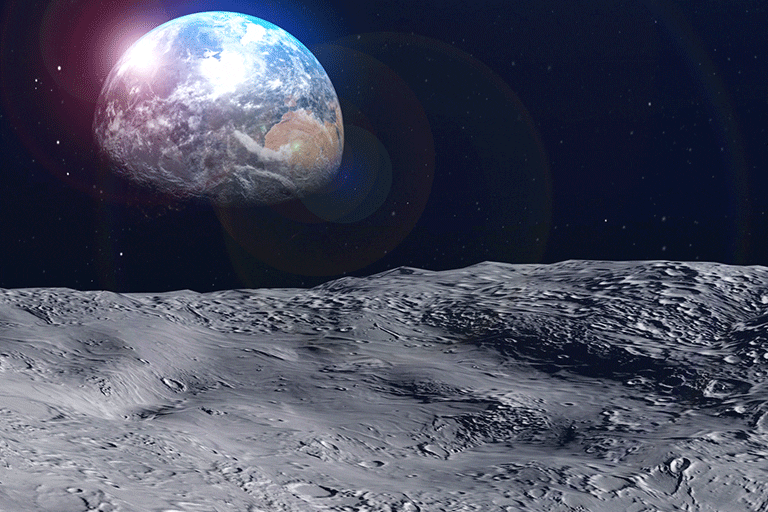Meet CLPS: NASA’s Initiative to Use Commercial Companies to Bring Cargo to the Moon
The Moon is about to get a lot busier thanks to NASA’s Commercial Lunar Payload Services or CLPS. This program will send small robotic landers, rovers, and other new technology to the moon via contract transportation services. With CLPS, NASA intends to buy payload services between Earth and the lunar surface using private companies. Starting in 2022, NASA will begin regularly sending small payloads (aka different instruments and experiments attached directly to the landers) to the Moon as a way to address new lunar exploration, science, and technology objectives.
As a mission, CLPS has three specific objectives: scouting for lunar resources, material collection and storage (also known as in situ resource utilization), and supporting the Artemis lunar program.
Scouting For Lunar Resources
With its cold, shadowy landscape and largely unexplored terrain, the moon is full of untapped natural resources, such as minerals and volatiles. These resources are vital to the future of missions and could be used in everything from lunar habitation to further exploration and more. These lunar resources are also crucial to the second objection: a new understanding of the potential for in situ resource utilization (ISRU).
In Situ Resource Utilization (ISRU)
ISRU is the collection, processing, storing, and use of materials found on other astronomical objects that replace materials that would otherwise be brought from Earth. For CLPS, ISRU would provide essential materials for life support, construction, energy to power spacecraft and payloads, and more on the Moon. By finding the materials that would improve the quality and quantity of missions, ISRU is helping to make space exploration more accessible. This accessibility leads to the last objective of CLPS: supporting the Artemis lunar program.
Artemis Lunar Program
Artemis is NASA’s program that plans to return astronauts to the Moon by 2024, preparing the way for human missions to Mars. Beginning in 2021, the Artemis program will rely on CLPS to perform experiments and gather data so NASA can prepare for its lunar explorations and human missions.
With objectives like these comes the need for new technologies and new contracts from space tech companies. Operated by NASA’s Science Mission Directorate in partnership with the Human Exploration and Operations and Space Technology Mission Directorates, the CLPS program is working with several American companies of varying sizes to deliver the payloads. NASA expects the contractors to provide everything needed for a safe and successful operation, including launch vehicles, lunar lander spacecraft, re-entry vehicles, and more. Launching from Earth and landing on the surface of the Moon, CLPS contracts are slated to launch until 2028. So far, more than 10 companies have been awarded contracts with NASA, including the Sierra Nevada Corporation, SpaceX, and Blue Origin.
As a leader in space robotics and technologies, Motiv hopes to support CLPS efforts with their own innovative technology concept: the Cold Operable Lunar Deployable Arm (COLDArm). Created in collaboration with NASA’s Jet Propulsion Laboratory (JPL), the COLDArm is made specifically for use during cold lunar missions. With its ability to function at super-cold temperatures as low as -180°C, the COLDArm is built to perform a variety of tasks, making it perfect for CLPS and future Artemis missions. Engineered to function without external heating systems, the COLDArm can assist with lunar exploration and excavations, while improving mission safety and success.
But CLPS isn’t just about the Moon. While these lunar payloads are working, they’ll also be getting us ready for the next stop: Mars. Although getting back to the Moon comes with its own benefits, it’s also the perfect way to prepare for human exploration of Mars. Motiv is excited to contribute technology like the COLDArm to upcoming lunar explorations and beyond. Alongside NASA and other partners, Motiv continues to work to extend our reach into space for the next generation.
Learn more about NASA’s Commercial Lunar Payload Services (CLPS) initiative.
